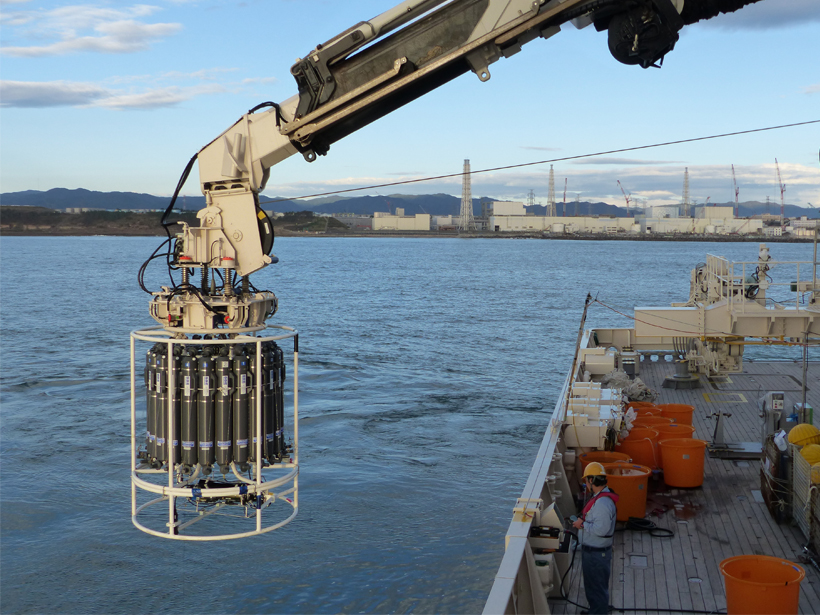Source: Geophysical Research Letters
On 11 March 2011, a tsunami struck the east coast of Japan, damaging the Fukushima Nuclear Power plant and precipitating the second largest series of nuclear meltdowns in history. The majority of the fallout was deposited into the Pacific Ocean, and scientists have scrambled to track the position of the harmful radioactive atoms ever since.
Between 2012 and 2014, Yoshida et al. analyzed the abundance of two cesium (Cs) isotopes—134Cs and 137Cs—at various locations throughout the North Pacific Ocean. These radioactive elements were released in relatively equal abundance during the Fukushima disaster, but 137Cs already existed in low levels in the Pacific Ocean as a leftover product of nuclear weapons testing over the years. Any discovery of 134Cs, however, could be directly attributed to the Fukushima disaster.
At the end of 2012, samples of surface water taken along the 30°N parallel—which runs approximately from San Diego to southern Japan—showed 134Cs had migrated as far east as 174.3°W longitude. (For reference, Hawaii is located at 157.8°W.) Similar measurements taken in 2013 show that the cesium appeared to be traveling about 5 centimeters per second: It had migrated to 160.6°W—approximately 1580 kilometers closer to North America.
The team also took depth measurements to track how deep the cesium was penetrating the water. Again, no 134Cs was found farther east than 160.6°W, but closer to Japan the radioactive isotopes were observed as far down as 600 meters—a surprising finding that showed the rapid and deep progression only 2 years after the accident. Physical processes responsible for the deep signal could be explained by the distinct water mass formation or deep wintertime mixing; however, it has yet to be clarified.
Although the full environmental impact of the Fukushima disaster may not be fully understood for years to come, the 134Cs present in the oceans won’t stay there for long; its half-life is only about 2 years, meaning that since the 2012 measurements, more than half of the isotopes have decayed. However, the radioactive 137Cs released from the plant won’t see a similar 50% reduction until around the year 2040.
The team says their findings are mostly consistent with models that aimed to predict the spread of the fallout and that the cesium might even be advancing slightly slower than predicted. (Geophysical Research Letters, doi:10.1002/2015GL065259, 2015)
—David Shultz, Freelance Writer
Citation: Shultz, D. (2016), Tracking radioactive cesium released curing Fukushima disaster, Eos, 97, doi:10.1029/2016EO046421. Published on 23 February 2016.
Text © 2016. The authors. CC BY-NC 3.0
Except where otherwise noted, images are subject to copyright. Any reuse without express permission from the copyright owner is prohibited.

